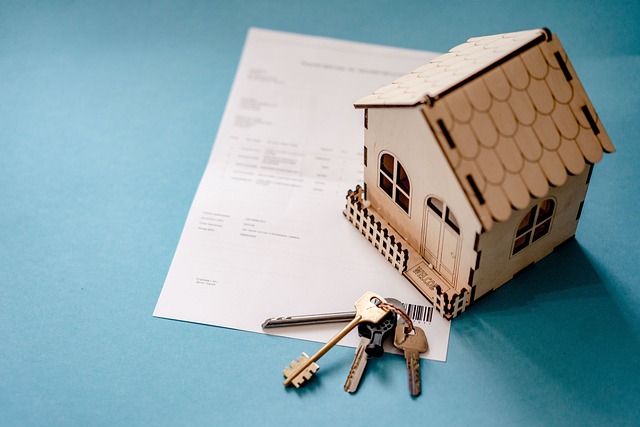Singapore's Executive Condominiums (ECs) under the Build-To-Order (BTO) program have evolved significantly over a decade. Initially conceived as transitional public housing for eligible singles, couples, and families seeking more space, these ECs have adapted to cater to a broader demographic, including young professionals and multi-generational families. Through resident votes on desired facilities, the BTO system ensures that ECs remain attuned to contemporary lifestyle needs, incorporating modern amenities and staying abreast of technological advancements like smart home technology and sustainable landscaping. As these communities mature, they also adapt to serve an aging population with tailored services and facilities. This adaptability, combined with strategic locations near improved infrastructure and new commercial hubs, has led to substantial property value appreciation for ECs, making them attractive investments. The lifecycle of an EC within Singapore's housing market demonstrates the foresight in its planning and design, showcasing a unique blend of public and private housing that responds to changing family dynamics and economic trends over time.
10 years is a significant milestone for any property, particularly for an Executive Condominium (EC) BTO in Singapore’s dynamic housing landscape. As these structures mature, they undergo transformative changes that not only affect their value and eligibility but also shape the lives of those who call them home. This article offers a comprehensive retrospective on the lifecycle of ECs beyond a decade, delving into the evolution, policy impacts, and market trends influencing these homes post-10 years. From initial lease periods to maturity, eligibility shifts, and potential for en bloc sales, this exploration also considers maintenance fees, property tax implications, and community enhancements over time. Join us as we examine how EC BTOs have adapted and what the future may hold for these pivotal components of Singapore’s residential offerings.
- Understanding the Lifecycle of an Executive Condominium (EC) Beyond a Decade: A 10-Year Retrospective on EC BTO
- The Evolution of an Executive Condo: Assessing the Changes After 10 Years in Singapore's Housing Market
Understanding the Lifecycle of an Executive Condominium (EC) Beyond a Decade: A 10-Year Retrospective on EC BTO

Ten years is a significant milestone for any property, particularly for an Executive Condominium (EC) in Singapore. Initially designed to offer a public housing option for couples with at least one child or married siblings, and providing a pathway to eventual private property status, ECs like those from the BTO (Build-To-Order) program have a distinct lifecycle that evolves over time. As an EC matures beyond a decade, several transformations occur within its community and structure.
During this period, the physical infrastructure of the EC typically undergoes routine maintenance and upgrades to ensure it remains a comfortable and modern living environment. The management of the development may also introduce new facilities or amenities in response to residents’ needs and preferences, reflecting the changing dynamics of family life and lifestyle priorities over time. Moreover, the value of these properties can appreciate significantly, making them an attractive investment for both original buyers looking to capitalize on their investment and potential new owners interested in acquiring a well-established property. The EC BTO’s journey from a housing unit to a matured community is a testament to the foresight of its initial planning and the adaptability of its design to cater to the evolving needs of its residents over the decades.
The Evolution of an Executive Condo: Assessing the Changes After 10 Years in Singapore's Housing Market

Over the span of a decade, an Executive Condominium (EC) in Singapore undergoes significant transformation influenced by the dynamic nature of the housing market and the changing needs of its residents. Initially categorized as a hybrid housing option for both singles or couples who may later qualify for a public flat, and families looking for a larger space, ECs are designed with features that cater to the needs of young professionals and multi-generational families alike under the Build-To-Order (BTO) scheme. As these properties mature, they often see upgrades in facilities and amenities to keep pace with evolving lifestyle preferences. The BTO system ensures that ECs remain relevant and well-suited to their residents’ needs by allowing them to vote on the types of amenities they desire. This responsive approach means that over 10 years, an EC might transition from featuring basic communal facilities like swimming pools and gyms to incorporating smart home technology, green spaces with sustainable landscaping, and even shared co-working spaces.
The physical evolution of an EC is complemented by shifts in market demand and property values. As the area around an EC becomes more established, perhaps due to improved infrastructure or the opening of new commercial hubs, the value of these properties can appreciate significantly. This appreciation is a result of factors such as location, supply constraints, and overall economic conditions. Moreover, the transition from being a relatively young and vibrant community to potentially attracting more mature residents over time can lead to further changes in the types of services and facilities offered. The BTO system’s adaptability ensures that ECs continue to meet the needs of their residents, making them a resilient and valuable housing choice in Singapore’s diverse property landscape.
After a comprehensive analysis over a decade-long span, the evolution of Executive Condo (EC) BTO units in Singapore’s housing market has demonstrated both stability and transformation. As detailed in “Understanding the Lifecycle of an Executive Condominium Beyond a Decade” and “The Evolution of an Executive Condo: Assessing the Changes After 10 Years in Singapore’s Housing Market,” EC BTOs have adapted to meet the shifting demands of residents, reflecting the dynamic nature of Singaporean living spaces. Over ten years, these properties have matured, often appreciating in value and offering a platform for families to establish roots. The insights gathered from this retrospective highlight the importance of flexible housing policies and the adaptability of ECs in providing sustainable living solutions for middle-income families. As we conclude, it is evident that the journey of an EC BTO extends beyond its initial build-to-order phase, contributing to the vibrant tapestry of Singapore’s housing landscape over time.
